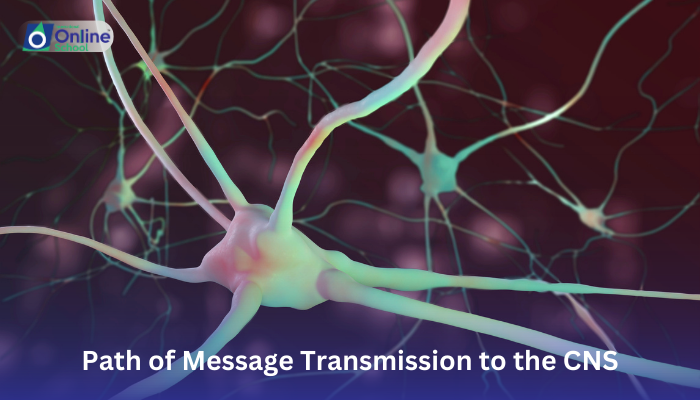
Learning Outcomes:
i. Describe the sequence of events in the transmission of a message from a receptor to the Central Nervous System (CNS).
ii. Explain the roles of sensory neurons, relay neurons, and interneurons in message relay.
iii. Understand the concept of sensory integration and its role in processing information in the CNS.
Introduction:
Imagine a fire alarm ringing in your house. That piercing sound triggers a cascade of actions, leading you to safety. But how does this information about the fire reach your brain and prompt you to react? In this lesson, we'll embark on a thrilling journey through the nervous system, tracing the path of a message from the moment it's received by a receptor to its processing in the brain, the central command center.
i. The First Runners: Sensory Neurons
Our adventure begins with the sensory neurons, specialized cells with receptors at their tips. These brave scouts are stationed at the body's peripheries – eyes, ears, skin, tongue, and nose. When a stimulus, like light hitting your eye, activates a receptor, the sensory neuron springs into action. A spark, an electrical signal, races down its length, carrying the message like a baton in a relay race.
ii. The Relay: Synapses and the Second Runners
The message doesn't reach the brain directly; it needs a handoff. At the synapses, specialized junctions between neurons, the electrical signal leaps across a tiny gap. Here, chemical messengers called neurotransmitters act like baton carriers, binding to receptors on the next neuron in the relay chain – the relay neuron. This second runner, residing in the spinal cord, carries the message further, hopping from synapse to synapse.
iii. The Local Heroes: Interneurons and Sensory Integration
But the message isn't just a simple relay. Along the way, it encounters interneurons, local heroes within the spinal cord. These neurons act as information processors, analyzing and refining the message from different sensory neurons. For example, when you touch a hot stove, the message from your skin combines with temperature and pain signals, allowing your brain to interpret the situation as urgent and trigger a quick withdrawal. This is sensory integration, where different sensory inputs are combined to create a richer understanding of the environment.
iv. Reaching the Grandstand: The Cerebral Symphony
Finally, the message reaches the brain, the grandstand of the nervous system. Here, in the cerebral cortex, the baton is passed to specialized neurons responsible for processing different types of sensory information. The visual cortex interprets the light signal from your eye into an image, the auditory cortex deciphers the sound of the fire alarm, and the somatosensory cortex makes sense of the heat on your fingertips.
The journey of a message through the nervous system is a testament to its remarkable efficiency and complexity. From the initial spark in a sensory neuron to the intricate symphony in the brain, each step plays a crucial role in our perception of the world and our ability to respond effectively. By understanding this incredible relay race, we gain a deeper appreciation for the silent communication network that governs every thought, action, and reaction. So, the next time you hear a bird sing or feel the sun on your skin, remember the invisible runners carrying the message, whispering tales of the world to your brain, the conductor of your sensory orchestra.